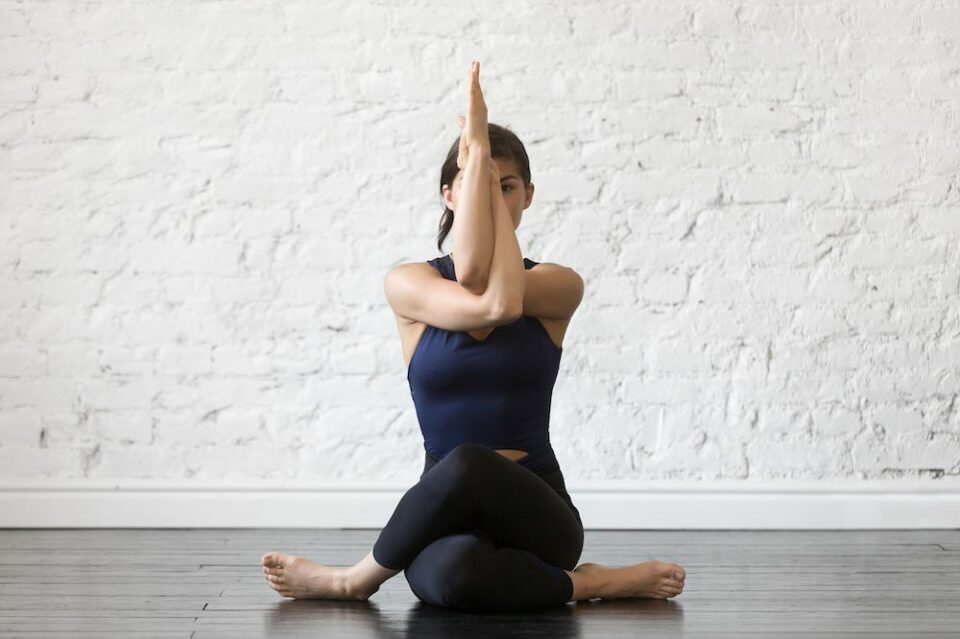You may have heard your yoga teacher refer to the hips as the body’s emotional junk drawer. While looking for stillness in pigeon pose, you may have internally explored whether or. not this statement is true. The answer to this question may amaze you. It turns out that repressed emotions show up as bodily tension in the hips.
To get the link between the hips and emotions, you have to understand the mind-body connection. When you’re stressed, your physical and emotional health can both be impacted and suffer. People who have experienced trauma or other mental health conditions such as depression or anxiety often experience symptoms of stress physically and emotionally. Through it all, the hips are the common denominator.
Of course, each body is different. Where one person holds stress in their body may not be exactly the same for another. However, neuroscience and somatics point to the hips as a potential storage vessel of emotions. They also offer a window into emotional healing. Here’s how.
Getting to know your hips
To look at how the hips can store emotions, it’s important to first understand their function and hips anatomy. The hip is the physical area on each side of the pelvis. The joint itself is one of the largest and most unique joints n the human body, responsible for weight-bearing, core stabilization, and creating movement in the upper leg. The tighter your hips are, the less flexibility and mobility you have in your body. This can result in pain and hinder daily activities like walking and climbing stairs. Tight hips can also cause an anterior tilt of the pelvis which results in poor posture and misalignment of the head and neck.
This speaks to the importance of the hips as it pertains to how the entire body functions. The hips contain the iliopsoas muscle, a deep muscle group towards the front of the inner hip. There is also the psoas which is the deepest support for the core. The pelvis holds the reproductive organs and has the muscles that connect the upper and lower body. The pelvis connects the breath and diaphragm to the legs. It is central and important to our physical and emotional body.
Lots of types of pain are connected to having tight hip flexors or dormant psoas muscle, mostly because it stabilizes the spine and can have effects on posture. Sometimes the lumbar spine can lose its natural curve and this can lead to tight hip flexors.
Many types of pain can be linked to a dormant or tight psoas muscle, especially because it stabilizes the spine and affects posture. In this case, your lumbar spine may lose its natural arch by becoming overly flattened or overly curved. Sitting for extended periods of time can lead to headaches, depression, pain in the hips and lower back pain.
Stress and the body
So, how do emotions tie into hips? Deep in the psoas are the kidneys, responsible for filtering toxins in the body, as well as the adrenal glands, which control our stress response system. This is how we begin to understand where emotions come into the picture.
The fight, flight, or freeze response is your body’s natural reaction to perceived danger. When you’re under any kind of mental or emotional stress, your psoas muscle responds by tightening.
How emotions get stored
Neuroscience also explains to us how emotions become stored in the body.
In 1985, neuroscientist Candace Pert found that small proteins known as neuropeptides activate the circuits linked to emotions. She famously said that “your body is your subconscious mind,” and that the physical body can change depending on what we’re feeling. Pert’s research suggests that emotions are electrochemical signals that carry emotional messages throughout the body. They are then expressed, experienced, and stored within the body and mind. This can influence activity in the brain and change the cell to either have a positive or negative effect on the body. Pert’s work proposes that each cell carries a kind of consciousness that stores memories and emotional states.
Because of this research, we can begin to understand the relationship between the emotions and the body and yoga for emotional health.
Considering the psoas link to the fight or flight response, it’s understandable that stress might get “trapped” there.
Furthermore, the hip area is related to the sacral chakra, an energetic center believed by some to house creative energy and sexuality. It’s also linked to how you relate to your emotions and the emotions of others.
A blocked sacral chakra can cause emotional instability as well as reductions in pleasure. When the hips are tight and contracted, it’s possible that sacral energy that’s not expressed remains stuck.

